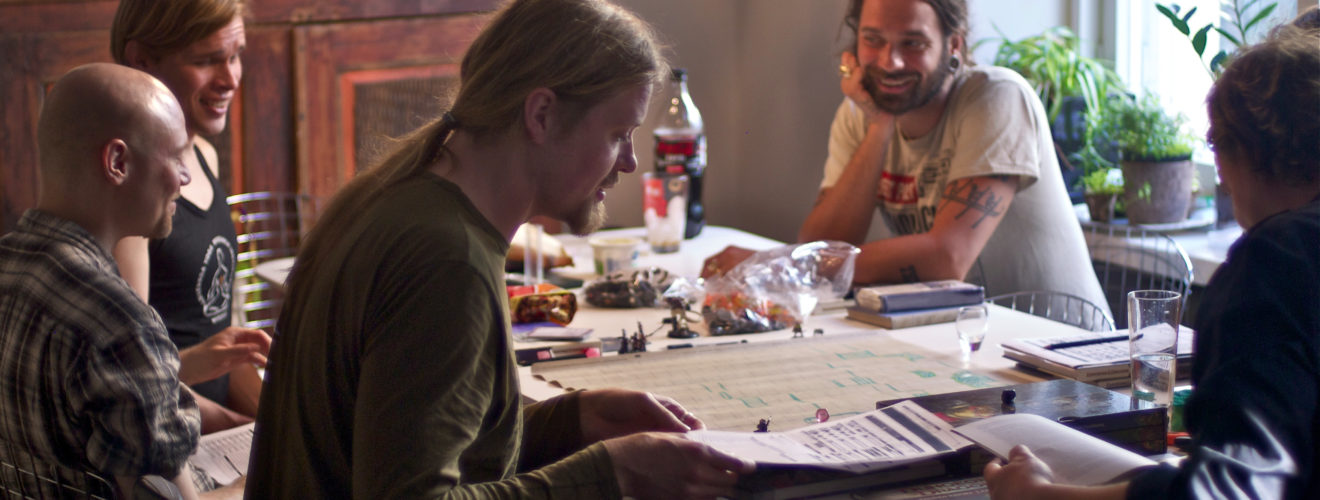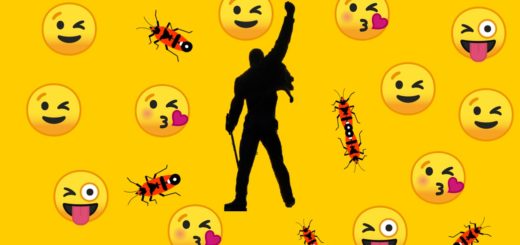Role-players: Building connections through dungeon delving and dragon slaying

Have you ever considered what it would be like to become a warrior destined to free a kingdom from a tyrannical villain’s leash? Maybe you have wondered how you could use magic to put a stop to a conspiracy that threatens to resurrect a fallen god? Or perhaps you wish to usurp the royal throne with loyal subjects and spiteful enemies at your beck and call?
These are scenarios which can be fulfilled through role-playing games which are designed to allow players to make choices as characters who can influence the world around them. Some of the most popular role-playing games include The Witcher from CD Projekt Red and Pillars of Eternity from Obsidian Entertainment1 2. A key element that these games share is the freedom they give players to make decisions and participate in adventures within a virtual realm where these experiences may not be achievable in the real world. However, the aforementioned games immerse players in a digital single-player environment where the world and its rules affect them individually. So what about role-playing games that take on a multiplayer approach outside of digitally-simulated domains?
Dungeons and Dragons, or D&D, is a popular example of a multiplayer game that has celebrated a long legacy within the role-playing genre over the years3. Instead of playing on a game console or computer, players can gather in groups and participate as characters they created with a pen and paper to interact in a world established by the Dungeon Master, an individual responsible for managing how the game operates. Through the act of role-playing, players can take on a persona that can be identical to or distinct in personality, background, and ideals from themselves. D&D’s developer, Wizards of the Coast, offers a variety of races and classes that allows everyone to conceive a unique character and, according to clinical psychologist, Dr Anissa Rivers’ study into fantasy role-playing games and empathy, develop ‘perspective-taking skills’ to effectively breathe life into a person that is not themselves4.
Some of the playable races are staples of the fantasy genre like dwarves, elves, and humans. Others include the beastly predators known as Bugbears, the mystical caretakers of the forest called Firbolgs and the charismatic and infernal mortals which are Tieflings. Ever since the fifth edition of the D&D game was first released, there have been numerous races that have been added to the expanding roster but creating a character would not be complete without choosing one of twelve classes. Classes such as the feral Barbarian, the sneaky Rogue, and the spellbinding Sorcerer provide player characters with not only talents and skills utilized in their adventures but also features that add flavour to their roleplay.
The concept of building the foundations of friendship was addressed in Jeffery L. Nicholas’ chapter from “Dungeons & Dragons and Philosophy”, which links the roleplaying game and its players with Aristotelian philosophy5. Nicholas discusses how companionship and affection between players can be influenced by the characters they perform and the experiences they share. Most players start out forming friendships of utility, attending game sessions mainly with the intent of playing and completing quests. It is through roleplay that D&D players can also build stronger and more meaningful relationships with each other through the experiences formed during each session.
To emphasize the concept of role-playing in forming relationships, a case study involving interviews with two players, Siobhan Dowling and Aleksandra Slosarska, and their respective Dungeon Master was carried out. Both players claimed to form friendships with others at their table while trying to break the Death Curse in Wizards of the Coast’s ‘Tomb of Annihilation’ campaign adventure6. Dowling plays a bright yet ditzy human wizard called Emma who has a ‘magnetic push and pull’ that draws people towards her while Slosarska is a ‘very fierce, hipster, and independent’ halfling monk named Kiri who also advocates for veganism. Both characters are optimistic and friendly towards other people they encounter throughout their adventures and they strive to befriend new allies and resolve problems through diplomatic means.
This does not mean that conflict would be settled so easily by these two. During a game session, Kiri had a problematic confrontation with another player’s character who killed ‘out of pride and laziness’, with the exchange ending in a heated argument. Whilst this affected the camaraderie between the characters, it provided both Slosarska and the other player opportunities to reflect on how their characters would evolve and grow from the argument. At the same time, both players developed an appreciation for the event and bonded through conversations about it rather than harbouring hatred against each other.
For Dowling, her shared experience with other player characters came in the form of a phenomenon that started on a spur of the moment. After almost falling off a bridge that brought the adventuring party from one mountain to another, the wizard concocted the idea of getting down quickly by what she referred to as ‘fantasy skydiving’. Most of the players were eager and supportive of this plan that they thanked Dowling for suggesting it and getting them involved, especially after she managed to get their characters to land on the ground safely. This particular experience would become one of many moments they would fondly reflect with during casual conversations.
Referring back to players’ experiences with games like Dungeons and Dragons in a social setting, it is important to consider how bonds are forged from the point of view of the person running the game, the Dungeon Master. Dowling and Slosarska’s game is managed by Calum MacLean, who describes his role as Dungeon Master as both a ‘rules lawyer and arbiter’ and a guide for the adventure they participate in. He also maintains vigilance over confrontations that develop between players to prevent further conflict during the game, especially when they encounter a moral dilemma or they disagree in opinions. There were other times he witnessed players change their characters to satisfy everyone’s needs rather than their own or leave the group in unresolved situations.
MacLean commented that neither situation, confrontation and cooperation between players, were positive outcomes in their own right. As an example, past players at his table encountered an ally, murdered by one of the player characters, haunting them as a revenant and left them ‘confused and very taken aback’ when it aggressively accused that same character for being responsible. Some thought this turning point in the game’s story and the moral arguments involved were exciting while others disagree with how it developed, leading the Dungeon Master to sit down and consider how players could develop a compromise with each other. This can reflect real-life events where people will encounter problems that may be difficult to move forward from. Talking to others individually and finding groups with similar experiences can help others to grow from the experience as a result.
Such interactions between players are not limited to the pen and paper environment that D&D established. Massive multiplayer online role-playing games, or MMORPG’s, also provide a platform for players to create characters and interact with each other but in virtual worlds. In a study conducted by Marcel Martončik and Ján Lokša from Presov University’s Institute of Psychology, players of the popular MMORPG World of Warcraft reported they experience less loneliness and social anxiety in the online world than in the real world7. This finding was also prevalent in Fan Zhang and David Kaufman’s insight into the association between MMORPG’s and socio-emotional wellbeing in older adults when they acknowledged the drive for playing these games was for the pursuit of social and emotional support8.
Players of D&D like Dowling have found others at her table to be more than friends of utility. While the social aspect is different from online platforms that World of Warcraft and other MMORPG’s reside on, she believed the game is also a learning process. She has opportunities to collaborate in telling stories about Emma and watch her grow through adventures alongside Kiri while a Dungeon Master points them in the direction of their next quest. She is also capable of interacting with characters from different walks of life and immerse herself in extraordinary events alongside them. At the same time, she has made ‘lifelong friends’ within the D&D community who share her interests and with whom she has created memories of every game they have played that she can happily look back at over time. Role-playing, according to MacLean, acts as a cathartic exercise of emotions that allows players to experience new feelings which would contribute to a character’s growth and their own. This is possibly one of many reasons role-playing games like D&D and online games such as World of Warcraft are popular hubs of friendships for numerous players. It also possesses the potential to be utilised in an educational setting, as a Brazilian investigation deduced when researchers considered the team aspect of role-playing games ensured that no one is excluded and everyone must achieve a goal cooperatively9. Whether to band together and bring an end to a Death Curse or find compassion and love from human connections at the table, there is no denying that role-playing can bring the best out of us.
This article was specialist edited by Luke Prentice and copy-edited by Audrey Gillies.
References
- https://thewitcher.com/en/
- https://eternity.obsidian.net/
- https://dnd.wizards.com/
- https://doi.org/10.1080/00029157.2015.1103696
- https://onlinelibrary.wiley.com/doi/10.1002/9781118921166.ch15
- https://dnd.wizards.com/products/tabletop-games/rpg-products/tomb-annihilation
- https://doi.org/10.1016/j.chb.2015.11.035
- https://www.sciencedirect.com/science/article/pii/S0747563217302388
- http://www.scielo.br/scielo.php?script=sci_arttext&pid=S0100-55022013000100012










